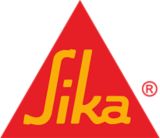
Sikafloor® BC 375 NAS
(former MTop BC 375NAS)
Two-part, pigmented, anti-static, solvent-free, low emission, self-smoothing PU coating with crack bridging properties
Sikafloor® BC 375 NAS is an anti-static, solvent-free, low emission, pre-filled, two-part self-smoothing polyurethane floor coating.
- Low emission according to AgBB
- Conductive floor coating
- Static crack bridging properties
- Exhibits excellent mechanical and anti-static properties
- Good abrasion resistance
- Easy to clean and maintain
- Yellowing, when used in UV-exposed areas, does not impair the technical properties of the body coat
